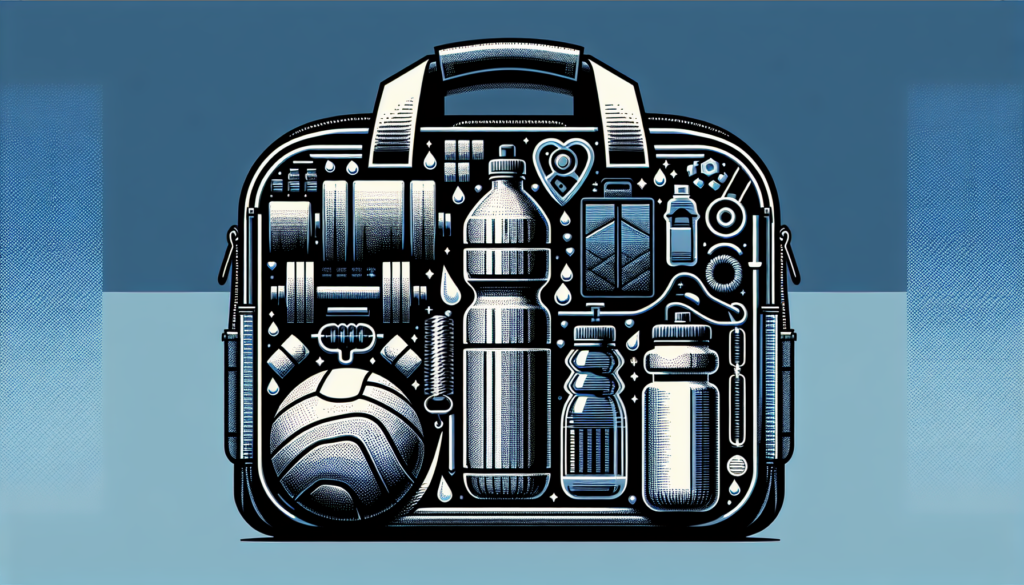Essential Safety Tips to Keep in Mind When Exercising
When it comes to exercising, your personal safety is of utmost importance. Whether you’re hitting the gym, going for a run, or practicing yoga at home, there are essential safety tips that you should always keep in mind. While you may not have control over external factors, such as the weather or the behavior of others around you, there are simple measures you can take to ensure a safe and enjoyable workout. In this article, we will explore some of these important safety tips that will help you stay injury-free and make the most of your exercise routine. But by following some essential safety tips, you can greatly reduce the risk of injuries and ensure a safe and enjoyable workout experience. Whether you’re a beginner or a seasoned fitness enthusiast, it’s important to always prioritize your safety. Here are some essential safety tips to keep in mind when exercising.
Choose the Right Exercise Environment
The exercise environment plays a crucial role in your safety. Before starting your workout, it’s essential to consider both the physical conditions and the weather conditions of the place where you’ll be exercising. If you’re outdoors, make sure the terrain is suitable for your chosen activity. Avoid uneven or unstable surfaces that may increase the risk of falls or accidents.
Additionally, it’s important to exercise in well-lit areas, especially if you’re going to be exercising during early morning or late evening hours. This helps ensure that you can see your surroundings clearly and avoid any potential hazards.
Lastly, always be aware of your surroundings. Keep an eye out for any obstacles, such as rocks, tree roots, or other potential tripping hazards. If you’re exercising in a public space, be mindful of other people, cyclists, or vehicles around you.
Warm Up Properly
Properly warming up before any physical activity is crucial to prevent injuries. A warm-up session helps prepare your body for the upcoming workout by increasing blood flow to your muscles, enhancing flexibility, and raising your core body temperature.
To warm up properly, include dynamic stretches that involve moving your body through a full range of motion. Examples of dynamic stretches include arm circles, leg swings, and walking lunges. Perform each stretch for about 10-15 repetitions or for about 30 seconds.
In addition to dynamic stretches, engage in cardiovascular warm-up activities, such as jogging, brisk walking, or jumping jacks. Start at a low intensity and gradually increase the intensity to get your heart rate up and increase blood flow throughout your body.
Remember, the purpose of warming up is to gradually prepare your body for exercise. So, be sure to gradually increase the intensity of your warm-up activities instead of jumping into intense exercises right away.

Wear Appropriate Clothing and Footwear
Wearing the right clothing and footwear is essential for your safety and comfort during exercise. When choosing workout attire, opt for breathable and moisture-wicking fabrics that allow sweat to evaporate and keep you cool. Avoid cotton clothing, as it tends to absorb sweat and can make you feel heavy and uncomfortable.
For footwear, choose athletic shoes that provide adequate support and cushioning for the specific exercise you’ll be doing. Different activities may require different types of shoes, so make sure to wear the appropriate footwear. For example, if you’re going for a run, wear running shoes that are designed to absorb impact and provide stability.
Avoid wearing loose or restrictive clothing that may get caught on equipment or restrict your movement. Make sure your clothing and footwear fit properly to prevent any discomfort or injuries.
Stay Hydrated
Proper hydration is vital for your overall health and safety during exercise. When you’re physically active, your body loses water through sweat, and dehydration can lead to fatigue, dizziness, and even heat-related illnesses. To avoid these issues, here are some tips for staying hydrated:
- Drink water before, during, and after your workout. Aim to drink at least 8 ounces of water before exercising and continue to drink small amounts throughout your workout session.
- Monitor your fluid intake and pay attention to your body’s thirst cues. If you’re feeling thirsty, it’s a sign that you need to hydrate.
- Avoid caffeinated and sugary drinks, as they can dehydrate you. Stick to water or opt for electrolyte-rich sports drinks if you’re engaging in prolonged or intense physical activity.
Remember, everyone’s hydration needs vary, so it’s important to listen to your body and hydrate accordingly.

Use Proper Equipment
Using proper equipment is essential to ensure your safety and minimize the risk of injuries. Whether you’re lifting weights, using resistance bands, or participating in sports, follow these guidelines:
- Inspect and maintain your equipment regularly. Check for any signs of damage or wear and tear, and replace or repair as necessary.
- Follow instructions and safety guidelines provided with the equipment. This includes understanding how to use the equipment correctly, ensuring proper set-up, and following any weight or resistance limits.
- When participating in activities that require protective gear, such as helmets, knee pads, or wrist guards, make sure to wear them consistently and correctly.
Using the right equipment and following safety protocols can help prevent accidents and ensure a safe exercise session.
Listen to Your Body
Your body is your best guide when it comes to exercise. Paying attention to how you feel during workouts is crucial for preventing injuries and avoiding overexertion. Here are some tips for listening to your body:
- Pay attention to any pain or discomfort. While exercise may sometimes feel challenging, it should not be painful. If you experience sharp or intense pain, stop exercising and seek medical advice if necessary.
- Take rest days and allow your body time to recover. Rest is just as important as exercise for overall health and fitness. Overtraining or pushing yourself too hard can lead to burnout and increased risk of injuries.
- If you’re unsure about whether or not to continue exercising due to a specific condition or concern, consult a healthcare professional. They can provide valuable guidance based on your individual circumstances.
Listening to your body helps you maintain a balance between pushing your limits and avoiding unnecessary risks.
Start Slow and Gradually Increase Intensity
When it comes to exercise, it’s important to start at a level that’s suitable for your current fitness level and gradually progress over time. Going too hard, too fast can lead to injuries and setbacks. Here’s how to approach intensity:
- Avoid sudden intense workouts, especially if you’re just starting or returning to exercise after a break. Instead, begin with lighter intensity exercises and gradually increase the intensity and duration over time.
- Focus on gradually building endurance and strength. Start with shorter workout sessions and lighter weights and gradually increase the duration or resistance as your fitness improves.
- Implement periodization in your training. Periodization involves dividing your training into phases, with each phase targeting specific fitness goals and gradually increasing the intensity. This helps prevent plateaus and reduces the risk of overuse injuries.
By starting slow and gradually increasing the intensity, you give your body time to adapt and minimize the risk of injuries.
Maintain Proper Form and Technique
Maintaining proper form and technique during exercises is crucial for preventing injuries and maximizing the effectiveness of your workout. Here are some tips to keep in mind:
- Take the time to learn the correct form for each exercise you perform. If you’re uncertain, seek guidance from a qualified fitness professional or use reputable instructional resources.
- Avoid improper alignment or posture during exercises. This can put unnecessary strain on your joints and increase the risk of injuries. Focus on maintaining proper alignment and engaging the appropriate muscles throughout each movement.
- Don’t sacrifice form for intensity. It’s better to perform exercises correctly with lighter weights or lower intensity than to compromise your form by using heavier weights or pushing yourself too hard. Quality of movement is key.
By prioritizing proper form and technique, you ensure that you’re getting the most out of your workouts while minimizing the risk of injuries.
Avoid Overexertion
While it’s important to challenge yourself during workouts, overexertion can lead to injuries and negatively impact your overall well-being. Here’s how to avoid overexertion:
- Pay attention to your body’s signals. If you feel excessively fatigued or experience muscle weakness, dizziness, or difficulty breathing, it’s time to take a break and rest.
- Allow for proper recovery between workouts. This includes getting adequate sleep, eating a balanced diet, and giving yourself rest days to allow your muscles time to repair and rebuild.
- Gradually increase the duration, intensity, or frequency of your workouts. Push yourself, but listen to your body and avoid sudden spikes in activity levels.
By avoiding overexertion, you can maintain a sustainable exercise routine that supports your overall health and well-being.
Always Have a Plan B
No matter how well you plan, sometimes things don’t go as expected. It’s important to always have a backup plan to ensure your safety and keep your fitness routine on track. Here are some tips for having a plan B:
- Have an alternative workout plan in case your original plan gets derailed. This can include a different type of exercise or modifying your workout to accommodate the circumstances.
- Be prepared for weather changes. If you’re planning to exercise outdoors, have a backup plan in case of rain, extreme temperatures, or other unfavorable conditions. This may involve finding indoor alternatives or adjusting the timing of your workout.
- Know how to modify exercises for safety. If you’re dealing with an injury, illness, or any other condition that may limit your abilities, be familiar with modifications that allow you to exercise safely without exacerbating the issue.
By having a plan B, you can adapt to unexpected situations and continue prioritizing your safety and well-being.
In conclusion, when it comes to exercise safety, there are several important factors to consider. Choosing the right exercise environment, warming up properly, wearing appropriate clothing and footwear, staying hydrated, using proper equipment, listening to your body, starting slow and gradually increasing intensity, maintaining proper form and technique, avoiding overexertion, and always having a plan B are all essential elements. By following these safety tips and prioritizing your well-being, you can enjoy a safe and injury-free exercise experience while reaping the numerous benefits of physical activity. Remember, your safety comes first, so always make informed decisions and take care of yourself while exercising.

















It's great that you talked about how business insurance can provide financial protection against unexpected events and help ensure the…
I like that you mentioned how business insurance is essential for protecting your bottom line and the long-term viability of…